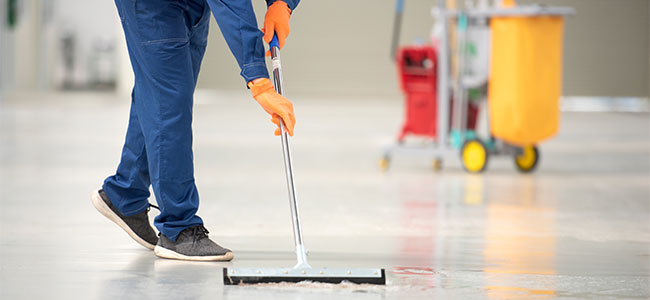
Tackling Slips, Trips and Falls
Some of the most common workplace injuries are caused by slips, trips and falls. How do safety managers identify their causes and implement effective solutions?
Employee safety is one of the most important aspects of any workplace, yet every facility experiences slips, trips and falls. Being able to identify possible hazards can improve employee safety, reduce the chance of costly fines and prevent downtime due to injury.
According to the Bureau of Labor Statistics, some of the most common workplace injuries are caused by slips, trips and falls¹. In fact, these workplace injuries are the third most common behind overexertion and contact with objects and equipment. Since this is one of the most common paths to injury, it’s no surprise that OSHA has a dedicated standard to help prevent such incidents. The OSHA 1910.22 general requirements for walking-working surfaces address the hazards associated with slips, trips, and falls.
OSHA’s definition of a walking-working surface is “any horizontal or vertical surface on or through which an employee walks, works, or gains access to a work area or workplace location.” OSHA regulations require that these surfaces:
• Must be clean — 1910.22(a)(1): All places of employment, passageways, storerooms, service rooms, and walking-working surfaces are kept in a clean, orderly, and sanitary condition.
• Must be dry — 1910.22(a)(2): The floor of each workroom is maintained in a clean and, to the extent feasible, in a dry condition. When wet processes are used, drainage must be maintained and, to the extent feasible, dry standing places, such as false floors, platforms, and mats must be provided.
• Must be free of foreign hazards — 1910.22(a)(3): walking-working surfaces are maintained free of hazards such as sharp or protruding objects, loose boards, corrosion, leaks, spills, snow, and ice.
While these are some of the most important regulations for walking-working surfaces, OSHA has more in-depth directives, too. It’s important for you and your employees to be familiar with these regulations to help stay in compliance and reduce the likelihood of a slip, trip, and fall.
Identifying causes of slips, trips and falls
Unlike most industrial injuries, slips, trips, and falls can happen to any employee, visitor, or contractor at your facility. Identifying hazards is sometimes difficult because they can occur at any location and come from many sources. It’s important to inspect all areas of a facility, both indoors and outdoors, on a regular basis. It’s also a requirement by OSHA 1910.22(d)(1) which states, “Walking-working surfaces are inspected, regularly and as necessary, and maintained in a safe condition.”
This article originally appeared in the April/May 2024 issue of Occupational Health & Safety.